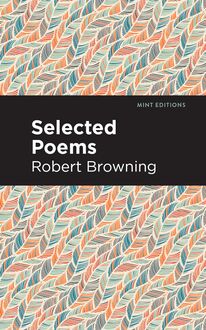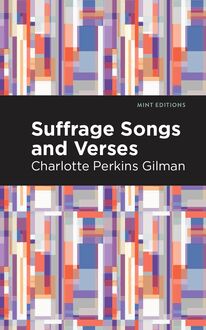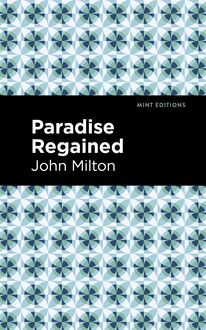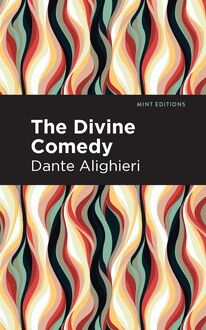-
 Univers
Univers
-
 Ebooks
Ebooks
-
 Livres audio
Livres audio
-
 Presse
Presse
-
 Podcasts
Podcasts
-
 BD
BD
-
 Documents
Documents
-
- Cours
- Révisions
- Ressources pédagogiques
- Sciences de l’éducation
- Manuels scolaires
- Langues
- Travaux de classe
- Annales de BEP
- Etudes supérieures
- Maternelle et primaire
- Fiches de lecture
- Orientation scolaire
- Méthodologie
- Corrigés de devoir
- Annales d’examens et concours
- Annales du bac
- Annales du brevet
- Rapports de stage
La lecture à portée de main

Vous pourrez modifier la taille du texte de cet ouvrage
Découvre YouScribe en t'inscrivant gratuitement
Je m'inscrisDécouvre YouScribe en t'inscrivant gratuitement
Je m'inscrisEn savoir plus
Vous pourrez modifier la taille du texte de cet ouvrage
En savoir plus

Description
The New Life (1294) is a work of verse and prose by Italian poet Dante Alighieri. Composed in the prosimetrum style, The New Life explores the popular medieval theme of courtly love. Made up of alternating commentaries, sonnets, and canzoni, the work is an essential expression of Dante’s poetic gift, and a foundational work for the dolce stil novo literary movement to which Dante was a central figure. Written in the Tuscan vernacular, the poem was influential in establishing a standardized Italian language.
Compiled and published following the death of Beatrice Portinari, whom Dante loved from the age of nine when he saw her on the streets of Florence, The New Life translates his personal grief into a moving and universally recognizable work on the nature of love. Dante, who believed that romantic love could lead to a development of the soul, subsequently bringing one to the love of God—a concept central to The Divine Comedy—divided his work into prose commentaries and poems in verse, a popular style known as prosimetrum. Despite this debt to tradition, however, Dante wrote The New Life in the Tuscan vernacular as opposed to Latin, making his work more accessible to readers. Autobiographical in nature, The New Life portrays Dante coming to terms with his grief, praising the deceased Beatrice, and turning friends and acquaintances into figures populating his poems. From sorrow to salvation, Dante finds the light of God through the darkness of death, testifying to the transformative power of love while proving beyond any doubt the power of a transformative poetry.
With a beautifully designed cover and professionally typeset manuscript, this edition of Dante Alighieri’s The New Life is a classic of Italian literature reimagined for modern readers.
Sujets
Informations
| Publié par | Mint Editions |
| Date de parution | 16 février 2021 |
| Nombre de lectures | 0 |
| EAN13 | 9781513284675 |
| Langue | English |
| Poids de l'ouvrage | 1 Mo |
Informations légales : prix de location à la page 0,0300€. Cette information est donnée uniquement à titre indicatif conformément à la législation en vigueur.
Extrait
The New Life
Dante Alighieri
The New Life was first published in 1295.
This edition published by Mint Editions 2021.
ISBN 9781513279657 | E-ISBN 9781513284675
Published by Mint Editions®
minteditionbooks.com
Publishing Director: Jennifer Newens
Design & Production: Rachel Lopez Metzger
Project Manager: Micaela Clark
Translated by Dante Gabriel Rossetti
Typesetting: Westchester Publishing Services
C ONTENTS P REFATORY N OTE I NTRODUCTION T HE N EW L IFE
P REFATORY N OTE
D ante Gabriel Rossetti, being the son of an Italian who was greatly immersed in the study of Dante Alighieri, and who produced a Comment on the Inferno , and other books relating to Dantesque literature, was from his earliest childhood familiar with the name of the stupendous Florentine, and to some extent aware of the range and quality of his writings. Nevertheless—or perhaps indeed it may have been partly on that very account—he did not in those opening years read Dante to any degree worth mentioning: he was well versed in Shakespeare, Walter Scott, Byron, and some other writers, years before he applied himself to Dante. He may have been fourteen years of age, or even fifteen (May 1843), before he took seriously to the author of the Divina Commedia . He then read him eagerly, and with the profoundest admiration and delight; and from the Commedia he proceeded to the lyrical poems and the Vita Nuova . I question whether he ever read—unless in the most cursory way—other and less fascinating writings of Alighieri, such as the Convito and the De Monarchiâ .
From reading, Rossetti went on to translating. He translated at an early age, chiefly between 1845 and 1849, a great number of poems by the Italians contemporary with Dante, or preceding him; and, among other things, he made a version of the whole Vita Nuova , prose and verse. This may possibly have been the first important thing that he translated from the Italian: if not the first, still less was it the last, and it may well be that his rendering of the book was completed within the year 1846, or early in 1847. He did not, of course, leave his version exactly as it had come at first: on the contrary, he took counsel with friends (Alfred Tennyson among the number), toned down crudities and juvenilities, and worked to make the whole thing impressive and artistic—for in such matters he was much more chargeable with over-fastidiousness than with laxity. Still, the work, as we now have it, is essentially the work of those adolescent years—from time to time reconsidered and improved, but not transmuted.
Some few years after producing his translation of the Vita Nuova , Rossetti was desirous of publishing it, and of illustrating the volume with etchings from various designs, which he had meanwhile done, of incidents in the story. This project, however, had to be laid aside, owing to want of means, and the etchings were never undertaken. It was only in 1861 that the volume named The Early Italian Poets , including the translated Vita Nuova , was brought out: the same volume, with a change in the arrangement of its contents, was reissued in 1874, entitled Dante and his Circle . This book, in its original form, was received with favour, and settled the claim of Rossetti to rank as a poetic translator, or indeed as a poet in his own right.
For The Early Italian Poets he wrote a Preface, from which a passage, immediately relating to the Vita Nuova , is extracted in the present edition. There are some other passages, affecting the whole of the translations in that volume, which deserve to be borne in mind, as showing the spirit in which he undertook the translating work, and I give them here:—
“The life-blood of rhythmical translation is this commandment—that a good poem shall not be turned into a bad one. The only true motive for putting poetry into a fresh language must be to endow a fresh nation, as far as possible, with one more possession of beauty. Poetry not being an exact science, literality of rendering is altogether secondary to this chief law. I say literality ,—not fidelity, which is by no means the same thing. When literality can be combined with what is thus the primary condition of success, the translator is fortunate, and must strive his utmost to unite them; when such object can only be obtained by paraphrase, that is his only path. Any merit possessed by these translations is derived from an effort to follow this principle… The task of the translator (and with all humility be it spoken) is one of some self-denial. Often would he avail himself of any special grace of his own idiom and epoch, if only his will belonged to him: often would some cadence serve him but for his author’s structure—some structure but for his author’s cadence: often the beautiful turn of a stanza must be weakened to adopt some rhyme which will tally, and he sees the poet revelling in abundance of language where himself is scantily supplied. Now he would slight the matter for the music, and now the music for the matter; but no, he must deal to each alike. Sometimes too a flaw in the work galls him, and he would fain remove it, doing for the poet that which his age denied him; but no, it is not in the bond.”
It may be as well to explain here a very small share which I myself took in the Vita Nuova translation. When the volume The Early Italian Poets was in preparation, my brother asked me (January 1861) to aid by “collating my Vita Nuova with the original, and amending inaccuracies.” He defined the work further as follows: “What I want is that you should correct my translation throughout, removing inaccuracies and mannerisms. And, if you have time, it would be a great service to translate the analyses of the poems (which I omitted). This, however, if you think it desirable to include them. I did not at the time (on ground of readableness), but since think they may be desirable: only have become so unfamiliar with the book that I have no distinct opinion.” On January 25th he wrote: “Many and many thanks for a most essential service most thoroughly performed. I have not yet verified the whole of the notes, but I see they are just what I needed, and will save me a vast amount of trouble. I should very much wish that the translation were more literal, but cannot do it all again. My notes, which you have taken the trouble of revising, are, of course, quite paltry and useless.”
In order that the reader may judge as to this question of literality, I will give here the literal Englishing of the Sonnet at p. 38, and the paragraph which precedes it (I take the passage quite at random), and the reader can, if he likes, compare this rendering with that which appears in Dante Rossetti’s text:—
“After the departure of this gentlewoman it was the pleasure of the Lord of the Angels to call to His glory a lady young and much of noble 1 aspect, who was very graceful in this aforesaid city: whose body I saw lying without the soul amid many ladies, who were weeping very piteously. Then, remembering that erewhile I had seen her keeping company with that most noble one, I could not withhold some tears. Indeed, weeping, I purposed to speak certain words about her death, in guerdon of my having at some whiles seen her with my lady. And somewhat of this I referred to in the last part of the words which I spoke of her, as manifestly appears to him who understands them: and then I composed these two Sonnets—of which the first begins, ‘Weep, lovers’—the second, ‘Villain Death.’
“Weep, lovers, since Love weeps,—hearkening what cause makes him wail: Love hears ladies invoking pity, showing bitter grief outwardly by the eyes; because villain Death has set his cruel working upon a noble heart, ruining that which in a noble lady is to be praised in the world, apart from honour. Hear how much Love did her honouring; for I saw him lamenting in very person over the dead seemly image: and often he gazed towards heaven, wherein was already settled the noble soul who had been a lady of such gladsome semblance.”
It would be out of place to enter here into any detailed observations upon the Vita Nuova , its meaning, and the literature which has grown out of it. I will merely name, as obvious things for the English reader to consult, the translation which was made by Sir Theodore Martin; the essay by Professor C. Eliot Norton; the translations published by Dr. Garnett in his book entitled Dante, Petrarch, Camoens, 124 Sonnets , along with the remarks in his valuable History of Italian Literature ; Scartazzini’s Companion to Dante ; and the publications of the Rev. Dr. Moore, the foremost of our living Dante scholars.
W. M. R OSSETTI
August 1899
1 . Gentile. The word means “noble” rather than (in its modern shade of meaning) “gentle.” “Genteel” would sometimes apply, but has ceased to be admissible in serious writing.
I NTRODUCTION
T he Vita Nuova (the Autobiography or Autopsychology of Dante’s youth till about his twenty-seventh year) is already well known to many in the original, or by means of essays and of English versions partial or entire. It is therefore, and on all accounts, unnecessary to say much more of the work here than it says for itself. Wedded to its exquisite and intimate beauties are personal peculiarities which excite wonder and conjecture, best replied to in the words which Beatrice herself is made to utter in the Commedia : “Questi fù tal nella sua vita nuova.” 1 Thus then young Dante was . All that seemed possible to be done here for the work was to translate it in as free and clear a form as was consistent with fidelity to its meaning; and to ease it, as far as possible, from notes and encumbrances.
It may be noted here how necessary a knowledge of the Vita Nuova is to the full comprehension of the part borne by Beatrice in the Commedia . Moreover, it is only from the perusal of its earliest and then undivulged self-communings that we can divine the whole bitterness of wrong to s
Attention
En entrant sur cette page, vous certifiez :
- 1. avoir atteint l'âge légal de majorité de votre pays de résidence.
- 2. avoir pris connaissance du caractère érotique de ce document.
- 3. vous engager à ne pas diffuser le contenu de ce document.
- 4. consulter ce document à titre purement personnel en n'impliquant aucune société ou organisme d'État.
- 5. vous engager à mettre en oeuvre tous les moyens existants à ce jour pour empêcher n'importe quel mineur d'accéder à ce document.
- 6. déclarer n'être choqué(e) par aucun type de sexualité.
YouScribe ne pourra pas être tenu responsable en cas de non-respect des points précédemment énumérés. Bonne lecture !
-
 Univers
Univers
-
 Ebooks
Ebooks
-
 Livres audio
Livres audio
-
 Presse
Presse
-
 Podcasts
Podcasts
-
 BD
BD
-
 Documents
Documents
-
Jeunesse
-
Littérature
-
Ressources professionnelles
-
Santé et bien-être
-
Savoirs
-
Education
-
Loisirs et hobbies
-
Art, musique et cinéma
-
Actualité et débat de société
-
Jeunesse
-
Littérature
-
Ressources professionnelles
-
Santé et bien-être
-
Savoirs
-
Education
-
Loisirs et hobbies
-
Art, musique et cinéma
-
Actualité et débat de société
-
Actualités
-
Lifestyle
-
Presse jeunesse
-
Presse professionnelle
-
Pratique
-
Presse sportive
-
Presse internationale
-
Culture & Médias
-
Action et Aventures
-
Science-fiction et Fantasy
-
Société
-
Jeunesse
-
Littérature
-
Ressources professionnelles
-
Santé et bien-être
-
Savoirs
-
Education
-
Loisirs et hobbies
-
Art, musique et cinéma
-
Actualité et débat de société
- Cours
- Révisions
- Ressources pédagogiques
- Sciences de l’éducation
- Manuels scolaires
- Langues
- Travaux de classe
- Annales de BEP
- Etudes supérieures
- Maternelle et primaire
- Fiches de lecture
- Orientation scolaire
- Méthodologie
- Corrigés de devoir
- Annales d’examens et concours
- Annales du bac
- Annales du brevet
- Rapports de stage




















